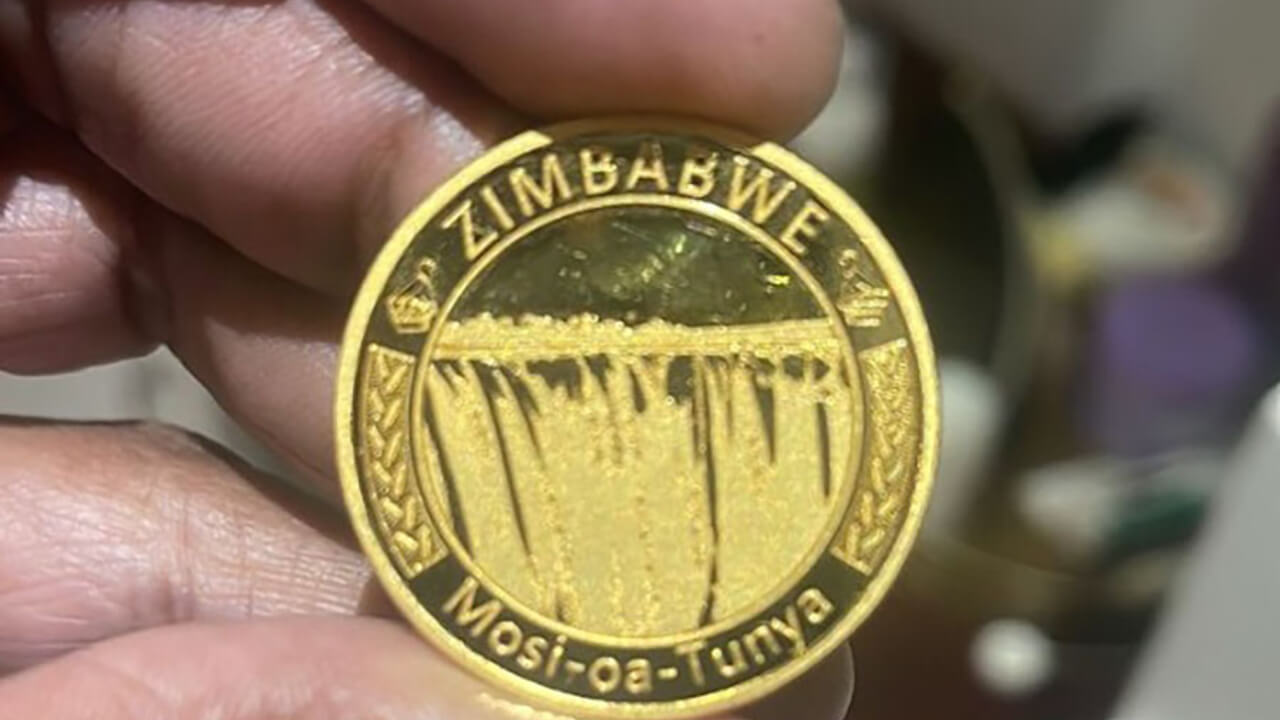RBZ digital gold token transacting in a month
The Reserve Bank of Zimbabwe (RBZ)’s gold-backed digital tokens, Zimbabwe’s own commodity-backed version of central bank digital currency (CBDC), will start operating as a medium of exchange for domestic transactions at the end of next month after authorities started working on the integration of systems for their use in making payments.
Zimbabwe’s gold-backed digital tokens are the digital form of the country’s gold coins and derive their value from the equivalent international price of the bullion reserves held by the central bank vaults.
Introduced in May this year, the gold-backed digital tokens followed the introduction of physical gold coins six months earlier, which were highly subscribed by investors as Zimbabwe’s domestic currency suffered relentless bouts of depreciation.
The Central Bank said, then, that the physical gold coins were both an investment instrument and a store of value.
While the gold coins served as both an investment and store of value, they helped to mop up billions of dollars of local currency excess liquidity, blamed for driving depreciation of the domestic unit and inflation.
RBZ governor, Dr John Mangudya, said in an interview this week that the gold-backed digital tokens were an investment product, which Zimbabweans will also use for transaction purposes. They will be in units of milligrammes.
A gramme of gold, which has a current average international spot price of US$63, is equivalent to 1 000 milligrammes. Zimbabwe uses the London Bullion Market Association (LBMA), one of the biggest, oldest and most widely used global gold markets, for gold price reference.
Mangudya said the RBZ was working with all stakeholders, chiefly banks and formal retailers, in the integration of systems to be used for transacting using the gold-backed digital tokens.
“The next stage now is to open bank accounts for those who have already purchased these tokens,” he said.
This will see the holders of the digital tokens obtaining swipe cards from banks, which they can use to transact with any registered trader like supermarkets.
The Central Bank was working on awareness campaigns on how the digital gold-backed tokens will work, testing systems interoperability and functionality, as well as making sure people have the requisite bank accounts before users can start transacting.
These processes, according to the apex bank will take a month and users will be able to approach their respective bank to buy the central bank’s gold-backed digital tokens in local or foreign currency.
“They are going to complement the existing currency framework whereby, itself not being a (traditional) currency, but you can transact using that gold token and can keep it as a store of value,” he said.
Zimbabwe currently uses a dual currency regime made of the Zimbabwe dollar and the United States, which will be reviewed at the end of the National Development Strategy (NDS1) policy framework in 2025.
“We are saying our CBDC, our central bank digital currency, is going to be on the basis of our gold. In other words, our CBDC is backed by gold. It means we cannot just have more tokens other than the equivalent of gold we are holding in store.
“If you look at cryptocurrency products; they are not currencies but an investment. So, this (gold-backed digital token) is an investment. But (by comparison) cryptocurrencies, in most cases, are not backed by anything.
“That is why they are not in the sphere of central banking; they (cryptocurrencies) are not regulated by central banks.”
A cryptocurrency, or crypto is a digital currency designed to work as a medium of exchange through a computer network that is not reliant on any central authority, such as a Government or bank, to uphold or maintain it.
“Whereas for our gold, it is we (the central bank) who keep it. So, what we are saying is that we need a cryptocurrency of some nature called CBDC, which is backed by reserves. The reserves are either gold or foreign currency,” Mangudya said.
Zimbabwe has made significant strides in building its gold reserves following the directive by President Mnangagwa for mining companies to pay 50 percent of their mining royalties in physical minerals.
The central bank chief said the country now holds more than 300 kilogrammes of gold in physical form while the balance of national reserves was in cash form (foreign currency).
Zimbabwe’s total gold output for the first five months of the year was marginally lower at 11,4 tonnes compared to 13,1 tonnes in the corresponding period last year.
RBZ Monetary Policy Committee member, Persitence Gwanyanya, said the dominance of the US dollar in the economy, where it now accounts for over 76 of all transactions, was cause for concern as it has serious implications on the stability of the local currency and as such, needs to be dialled back.
“I cannot think of any commodity or asset other than gold that can viably compete with the US dollar, especially as a store of value,” Gwanyanya said in a recent article published by our sister publication, The Sunday Mail.
“This could be the reason RBZ’s Monetary Policy Committee (MPC) has opted for gold instruments, starting with physical gold coins and then the gold-backed digital tokens to stabilise the local currency,” he said.
What are CBDCs?
According to McKinsey & Company, a global management consulting firm, central bank digital currencies are the digital form of a government-reserve bank-issued currency that is not backed by a physical commodity (has no physical units).
They are issued by central banks, whose role is to support financial services for a nation’s government and its commercial-banking system, set monetary policy, and issue currency.
There’s no one type of CBDC; a wide variety of approaches are being piloted in various countries. One type of CBDC is an account-based model, such as DCash, which is being implemented in the Eastern Caribbean.
With DCash, consumers hold deposit accounts directly with the central bank. At the opposite end of the spectrum is China’s e-CNY, a CBDC pilot that relies on private-sector banks to distribute and maintain digital currency accounts for their customers.
China showcased e-CNY during the 2022 Olympic Games in Beijing. Visitors and athletes could use the currency to make purchases within the Olympic Village.
Why Central Bank interest in CBDCs
McKinsey and Company says plummeting cash usage is driving central banks interest in CBDCs.
It says in Europe, cash usage declined by one-third between 2014 and 2021.
In Norway, only 3 percent of payment transactions are made with cash. This trend has forced central banks to re-examine their role in the monetary system.
Another factor, McKinsey says, is the growing interest in privately issued digital assets.
In the United Kingdom, 10 percent of adults report holding or having held a digital asset, like cryptocurrency. The European Central Bank says that as many as 10 percent of households in six large EU countries own digital assets. Consumer use of digital assets can be viewed as a potential challenge to fiat currency as a unit of measurement for value.
Advocates of digital finance believe that new digital tools, among them CBDCs, can address many issues related to efficiency, security, and access:
Potential Benefits of CBDCs
-Reduced costs.
Financial-service providers stand to save billions annually in direct costs by shifting spending away from physical infrastructure and toward digital finance. But reduced costs must be measured against the significant investments in new technology that CBDCs will require.
-Increased speed.
CBDCs could improve the speed and efficiency of many countries’ electronic payment systems.-ebusinessweekly










